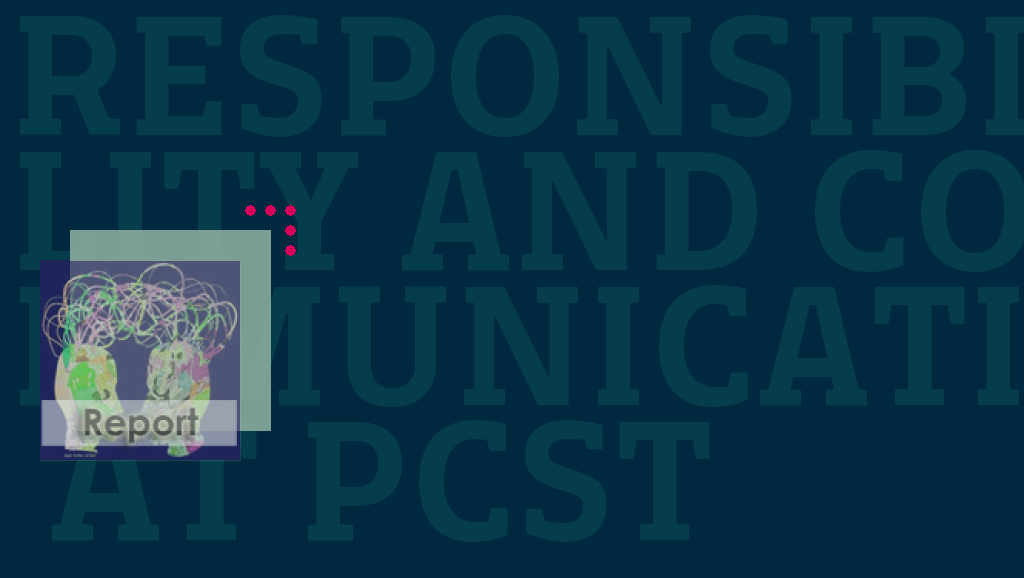In Florence on 20th April 2012 the Bassetti Foundation organized a seminar as part of the Public Communication of Science and Technology Conference (PCST2012). This international conference hosted scientists, delegates from scientific institutions, researchers and journalists. What follows is a review of the papers and video of the seminar.
Index
Part 1. (this post)
Introduction, Gail Edmondson, Alexander Gerber, video
Part 2. (following post)
Franca Davenport, Ann Grand, debate, video and photos
The theme of the communication of science has been raised many times on our website, as it has through seminars and conferences promoted by the Bassetti Foundation. The tie to responsibility in innovation lies in the fact that in constructing a bridge between science and society, the communication of science and technology influences public opinion and political decision-making, therefore contributing to the delineation of the entire innovation process.
The title chosen by the organizing committee of this edition of the PCST was ‘Quality, Honesty and Beauty’: the Bassetti Foundation has interpreted this as asking the question of whether the communication of science and technology should not also be ‘responsible’.
While designing the framework for the seminar, we began with a passage that we retain necessary: from the individual responsibility of the communicator to a collective and stronger responsibility of the system. It is possible that this passage is more relevant today than it was in the past, because the Internet, social media and the push for transparency on the part of general public opinion make access to information ever easier. This new context creates a challenge for the communication of science. We need to define a new role for scientific communicators and to construct a system of communication of science that is aware of its responsibility.
Chair
Gail Edmondson
Editorial Director of Science|Business.
Introducing the panel, Gail Edmondson highlighted how modern technology is changing the communication of science and technology. In 2002 one of her inquiries focused upon the trafficking of toxic refuse in Southern Italy. Reports filed by Legambiente and the law enforcement institutions highlighted the possible health risks, and journalists showed particular interest in investigating this aspect, including interviewing scientists and doctors. Some of these turned up alarming data sets, for example regarding the rise in tumors, even if there was a certain reluctance to say it personally. Some of the Italian national organizations were shown not to have put concrete initiatives into place and not to have taken official positions. It was therefore not really possible to provide enough scientific data in support of the danger that the situation provoked, but the relating article was published however and received national interest. 10 years on Edmonson maintains however that the impact of her journalistic inquiry was negligible: the Mafia still controls the traffic of toxic materials and the situation has changed very little.
Gail Edmondson asks herself if the technology available today means that an event such as this might now have a different outcome. Social media and the possibility of putting people with similar interests in touch, including scientists, could in fact help inquests of this type and scientific journalism in general to be more effective. We must however think about the consequences of having a more open form of communication that could provoke alarmism within the population and thus affect the economy
Alexander Gerber, Innocomm Research Centre
Open science without scientists?
The traditional media suffers the pressure of social media, but this is not necessary a threat. It can on the other hand represent a push in the direction of improvement. It is a fact however than even though social media, crowdsourcing, blogging and other forms of electronic communication are widespread today, most journalists and representatives of the academic world rarely use these instruments. For example just 2 percent of scientists use the possibilities offered by these types of media. Using these means of communication certainly requires work, as it implies an openness to dialogue and time. It is also a method however for creating transparency, and transparency creates the opportunity to generate credibility within institutions, in scientists and in the messages they convey.
According to Gerber, a communication system that relies on such instruments holds a higher level of responsibility that it derives from its higher level of credibility. Gerber goes on to analyze the concept of responsibility within the various professions that are related to the communication of science. From journalists, who have to be able to distinguish between ‘good’ and ‘bad’ science, to scientists, who in a more transparent system cannot avoid confronting the theme of uncertainty in public (given that researchers reach differing conclusions from the same data).
According to the researcher, in this context the work of the policy-maker lies in incentivizing the system of open science and the free access to information.
Here below is a brief graphic presentation of the concepts presented by Alexander Gerber.
The video of the first session:
——————–
(Image: Communication by Joan M. Mas (DailyPic) from Flickr – modified)
















